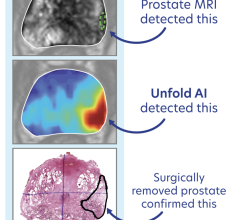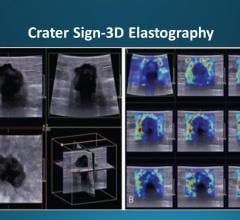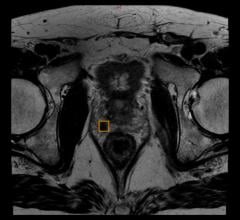February 6, 2014 — Ultrasound-guided biopsies miss prostate cancers that are detected by the slightly more expensive and slightly more invasive 3-D mapping biopsies. A 2006 study compared ultrasound-guided biopsy of 180 men diagnosed with early stage prostate cancer to 3-D mapping biopsy. The study showed nearly a quarter of patients were upgraded to a more clinically significant stage of disease after 3-D mapping found pockets of cancer missed by the first technique. A University of Colorado Cancer Center study reports the locations of these most-missed pockets of prostate cancer.
"There are three major reason we perform these 3-D mapping biopsies in the clinic: First, a man may have rising PSA despite a series of negative biopsies and so want a more detailed opinion,” said . “Second, a man may prefer additional reassurance that watching and waiting rather than treatment is the best course of action Al Barqawi, M.D., investigator at the CU Cancer Center, associate professor at the CU School of Medicine and the paper's senior author. Third, a man may pursue focal therapy in which only the cancerous sections of the prostate are removed and so need accurate information on the position of his cancer."
In a 3-D mapping biopsy technique, needle biopsies are taken 5mm apart across the x-, y- and z-axes of a three-dimensional grid through the prostate. Barqawi has performed over 600 of these procedures.
The current study enrolled 161 men with a mean age of 61.6 years who had been diagnosed with low-stage prostate cancer by ultrasound-guided biopsy. The study performed 3-D mapping biopsies at a mean 192 days after the first and compared the results. Overall, ultrasound-guided biopsy found an average of 1.38 cancerous zones per patient, whereas 3-D mapping biopsy found 3.33 per patient.
The follow-up findings from the 3-D mapping study resulted in upgrading the severity of many of these seemingly low-grade cancers. Specifically, after first biopsy, 7.5 percent of patients had been graded Gleason 7, the lowest grade at which treatment is considered "medium risk" and for which treatment is a reasonable option. After second biopsy, the percentage increased to 25. After first biopsy, no patients had been scored above Gleason 7, and after 3-D mapping biopsy, 4 percent were found to have Gleason 8, and 2 percent had Gleason 9.
"What we hoped to discover in this study is exactly where cancer is being missed by ultrasound-guided biopsy,” Barqawi said.
Of these 161 total cases, cancer was found in the left-mid section of the prostate 62 times after it had been missed by ultrasound-guided biopsy. Likewise, 3-D mapping found 62 unreported cancers in the right-mid section and 41 undetected cancers in the left-apex zone.
"This study adds to our knowledge about the interface and best uses of these two techniques. The cost and invasiveness of 3-D mapping biopsy make it inappropriate for screening,” Barqawi said, “but our message is that with the confirmation or strong suspicion of cancer, 3-D mapping biopsy offers a much more accurate assessment of the location, stage and risk.”
For more information: www.ucdenver.edu


 July 24, 2024
July 24, 2024 








